Krug Vintage 1996
$500; drunk 25 APR 09; 98++ points
Any duffer must agree with
the Krug family when they call this vintage “extreme, eccentric champagne”. On
another level, it’s that way because it’s so stubbornly, insistently Krug in
its style, being a combination of the dogged determination of the Krugs to
maintain their house distinction through a unique formula honed consistently
since 1843, and one of the most formidably confounding vintages in a century.
1996 was the last Krug
vintage to which Paul Krug II contributed: it was blended by him, his sons Rémy
and Henri, and his grandson Olivier, who famously reported “Throughout his
life, my grandfather shunned exaggeration of every kind. But on this occasion,
he looked at us and said ‘I think this may well be the next 1928’.” Which is
saying something. While the 1928 was growing ricketty when I last tasted it in
the early ’nineties, it still had the whiff of sublimity, a skerrick of its
original fruit, and astonishing, living natural acidity holding its old flesh
to its austere, rigid skeleton.
1996 was a freak year,
weather-wise. The on-off summer alternated between sodding rain-driven humidity
and extreme dry heat, which eventually surrendered to a sunny, clear autumn
with freezing nights. The Krug system of pressing each parcel of fruit in or
near its source vineyard, then fermenting and ageing the must in neutral, old
Argonne barrels and taking complexity from deliberate oxidation and extended
lees contact, whilst eschewing malo-lactic fermentation, the reserve then
stored in chilled stainless steel away down in the chalk until required, always
gives wine of character and finesse far beyond the sum of its components. And
by deliberate oxidation, I mean it: once the Krugs have decided on the
composition of each cuvée, its barrels are drawn from below and tipped on the
blending room floor, from whence the wine flows back down through a pipe
through the chalk to the blending tank way below. The winery smells very good
at assemblage!
The vagaries of 1996 have
obviously bowed very low to the Kruggiste method, for this wine is indeed an
astonishing, perfectly polished thing of beauty: the typically Krug
counterpoint of extreme complexity with unlikely finesse. Chardonnay, pinot
noir and pinot meunier have been blended to conjure a wine of such beauty and
confidence that it seems almost matter-of-fact. Normal. The done thing. Oh how I wish! Ripe anjou and comice pears
seep calmly through the bouquet, with some sort of exquisite honey and ginger
brioche, yet to be invented. The palate is creamy and reassuringly smooth in
that strangely assertive and matter-of-fact way, and ever-so-gradually tapers
off, leaving a rapier of stern acidity and the feeling that something very very
rare and special has just happened to your gustatories. The aftertaste is
incredibly fresh and enlivening; the bead and mousse ever so fine, gentle, and
persistent in its caress. I once asked Henri how much research they’d done into
the secret of Krug’s tiny bubbles. He said such information was a highly
confidential secret of Krug but admitted he’d spent many years counting them.
So. The price? Sell your car.
Krug Champagne 1998
$550; cork; drunk on various occasions, this note on
12JAN10; 97+++ points
There's an apocryphal yarn about the murderer who, upon being strapped into the
electric chair, looked at his executioner and said "This'll teach
me". This wine always reminds me of that. I don't really know why: the
damned thing is so profoundly confronting in its beauty and intensity that the
mind does go silly, in a willy nilly, electrocuted sort of way. Thoughts fall
to the floor and shatter harmlessly about the drinker: they no longer count.
Perhaps it's also the serene expectation that one will soon be found dead in
one's chair with a really silly smile and a glass, empty, clutched in a grip
that makes Charlton Heston's rifleman speech look like something uttered by a
total softcock. The smell of an organic wheatfield, almost ripe, after the
lightest rain. The smell of the most delicate brioche. Hazelnut. Wet chalk.
Sliced, poached almond being fastidiously placed on a perfect marzipan icing in
the kitchen of La Crayere. Oyster mushroom, and enoki. I can smell it for an
hour, happy to postpone the execution. But finally, involuntarily, the glass
finds its way to the lips, and like all Krug, just seems to evaporate into my
organs. My body. The corpuscles, the genes, the chromasomes vibrate in
immaculate harmony, and purr. This must send a transmission so powerful it can
be received by other life forms, billions of light years away. I remember Remi
Krug remarking twenty years ago that he admired the way I guzzled the Grand
Cuvee, rather than inhaling common air through it to make that obscene gurgling
noise and spitting it like an Englishman. "But I am a Vikin, and Krug
comes properly perforated with bubbles installed by the Krug family," I
responded. "It needs no other air buggering it up." And so it goes.
No need to change the technique. Gulp it down! Have it from a bigger glass!
Pour yourself a tumbler! Do it again! Sell your house!
NEW!
Dom Perignon Œnoteque 1996
$300-$500; 12.5% alcohol; cork; disgorged 2008; 96+++
points
Champagne’s 1996 vintage weather was freakish: hot and cold;
wet and dry. A sunny autumn with freezing nights finished it,
seemingly entrapping the polarised results of those earlier weather extremes
forever. So this sinister black-and-silver
label hides a see-sawing range of flavours that covers the
wheatfield/brioche/lemon pith characters of the chill, as much as the gently
chubby riper umami/glutamate insinuations of the heat and humidity. Given the elegance of touch chef de cave Dr
Richard Geoffroy shows in his blends, these facets here seem more overt than in
the more boisterous assemblages of some rivals and neighbours in the same year.
In this wine, for the first time, I saw a fatty acid that reminded me of
avocado, which occurs at the sunny extreme; the chilly and austere lemon and
chalk characters are there to balance, but so far, they remain remote and
contrasting. I won’t say straining to
balance, but suggest they are not as harmoniously supportive as they are in,
say, the 1998 wines. Which is to be extremely picky. I’d gurgle away at this anytime, anywhere,
and still grin foolishly. But where to
get the money? Certainly not writing
about wine!
Lanson Noble Cuvee Blanc be Blanc 1989
cork; magnum well and truly drunk on 4APR10; 95++ points
As the great evening proceeds, the buttery brioche and Petticoat Tail
shortbreads magnify, jumping the gastro ropes into the genteel ring with the
toasted hazelnut, the lemon and strawberry pith, through the middle mousse and
the perfect richness and that fabbo dry dry tail with all its langorous and
perfect tannins into the uncontrollable future zippo. Pass the funnel, Jeeves,
I feel like a bit of a lie down.
Romney Park Hahndorf Adelaide Hills Blanc de Blancs
2004
$67.50; 12.5% alcohol; crown
seal; 94+ points
It’s been a year since I
last drank this scrumptious luxury, and in that time (this particular bottle
was on lees until 13th February 2009) it has become much more rare, a lot more
expensive, and, well, better. I drank it today at The Victory, with the Domaine
de la Romney Parkers, half the Honeymoon Hillers, and none other than Doug
Govan himself. Antonio Carluccio sat unrecognised a table away, photographing
every dish he ordered while he drank Paxton’s Quangdong Farm Shiraz and Romney Park’s
new pinot noir. But the star of the day was this amazing fizz: think of
Billecart-Salmon’s Blanc de Blanc without the Avize component. The damned thing
does immediately make me think of Mesnil-sur-Oger; even Krug’s Clos de Mesnil
BdB nipple polish. Delicate cashew and carambola aromas have joined the dry
meadow blooms that were there a year or so ago, and the apples have become
slightly poached quince, with maybe just half a clove. I’m waiting for a better
Australian fizz. This is now simply exquisite – easily the best South
Australian sparkler, ever, and maybe the best Australian. It’s gorgeous,
delicate, forceful, elegant: hand disgorged upon order, and best about three
months after disgorgement, so I’d be calling Rod Short at Romney Park
to ensure your spring and Christmas fizz will be delivered in perfect order, NOW.
(International + 61 439 398 366) 25 MAR 09
Kreglinger Tasmania Vintage Brut 2001
$46.50; 12.5% alcohol; cork; 94 points
René Bezemer made this wondrous explosion of titillation and luxury for the
private Kreglinger company (founded in Belgium in 1797 it procured Piper’s
Brook, founded in 1974, in 2003). It’s a gorgeous drink: all cracker biscuits,
brioche and pickled lemons in the prickly bouquet; crunchy terroir-driven gears
in the mouth. Increasingly, with wines like this, Tasmania
is showing that there’s little point in going all the way to France for
fizz. Kreglinger’s Belgian, and they’ve come all the way here. I’m with them.
(2.2.8)
Lilbert Fils Grand Cru Blanc de Blancs
Champagne NV
$90; ??% alcohol; cork;
drunk 6MAY10; 94 points
My money was immediately on this babe coming from Mesnil: it has that cute
aroma of paper flowers that usually signifies that ville. But no - it's from
further north: 60% Cramant, 30% Chouilly and 10% Oiry, with an abolutely
minimal doseage. It has incredible finesse for a wine of this price: so crisp
and crunchy it seems almost brittle, like those crunchy Italian almond
biscotti. Very stylish indeed, and cheap!
Kreglinger Tasmania Vintage Brut 2002
$50; 12.5% alcohol; cork; 93+ points
Handsome brut, this! Very masculine, like a petit Krug GC, in that it has as
much greengrocer as fruiter and haute pâtisserie in its complex, yet very fine
and reserved bouquet. The palate’s creamy, full and basically plain sinful; the
aftertaste lingering and teasing as much as cleansing and relaxing; and the
bead very very tiny once your pour settles, which is a good thing, as we don’t
want too many cavities in our drinks now, do we? Seriously, you’re a bit of a
boofhead buying anything Champenoise short of $150-$300 cru prestige stuff when
this is available, which it is. Which is also good. Very good. Tres bon. See,
I’m like Randy Newman! I can speak French! JAN 09
Romney Park Blanc de Blancs 2004
$28; 12.5% alcohol; crown seal; 93+ points
Romney Park is no one trick pony. I was first nailed by the disgorged-to-order
sparkling, which I reckon’s in the Kreglinger/Arras/Clover Hill/Yarra Bank
league, and given its junior status and kindergarten price, comes scarily close
to the Gosset/Krug school. It was whole bunch pressed in a basket, fermented in
6 year old hogsheads, underwent full malo in oak, and was cold-stored in
barrel. The aroma of the stuff jumps from the glass to your nose while the
glass is still on the table. It’s creamy. With wheat, paperflowers, brioche,
cashew and crackers. The palate’s tight and nutty, with faint marzipan, leaf,
green apples and chalk. Its 10 g/l of acidity is all natural. There are 800
bottles! While it’s rich and creamy, it’s still precise and tight, and after
about twenty minutes air begins to loose delightful chèvre fats from the malo,
and all the while there’s that tight swarfy acidity anchoring the foundations.
“I wouldn’t use Adelaide Hills pinot for sparkling” said Rod Short. “It’s a bit
sort of fat and boring”. (15.2.8)
Gratien & Meyer Cremant de Loire Brut
$25; 12.5% alcohol; cork(!); 92++ points
With recent stunning chenins
blanc from Coriole, Dowie Doole and Jardim do Bomfim, it’s a joy to push the
chenin barrow all the way from its home in France’s valley of Kings, the Loire,
where the natural acidity is very high in this variety – so high, that even the
botrytised ones, like Moulin-Touchais, take fifty years to approach. This
hyper-cool fizz has a little chardonnay to add cream to the lean acidity of its
chenin, making a beautifully smooth, slightly plump seduction that makes me
dream of smoked oysters, foie gras, and nightingales in aspic with juniper
berries. Or chêvre on rye with capers, if you don’t eat little birdies. Take a
bottle to the beach, or a case to Kangaroo
Island. Vintage Cellars
and 1st Choice. DEC 08
Chandon Cuvée Riche
$37; 12.5% alcohol; cork; 91 points
Next time you plan a hangover, spill a bottle of this rich, sweet, bedside fizz
over a bowl of sliced peaches. Plenty of lemon juice, and a splash of kirsch,
or good tequila, which doesn’t seem to exist in Australia. (There is mucho in Mexico.) Which
is why you might need this healing morning sickness brekky. Leave your bowl in
the fridge overnight, add rich cream, and devour before the dog bites you. Or
have it neat the night before. www.greenpointwines.com.au
Pirie Tasmania
Non-Vintage
$32; 12.5%; Diam cork, 90
points
Many years ago one engaged
Dr Brian Croser in a conversation concerning his forthcoming Petaluma fizz. Dr Croser, who wasn’t yet a
Doctor, wanted nevertheless to call the wine Croser, a word which, one
suggested, was difficult to pronounce without the corners of one's mouth
turning down. On the other hand, Piccadilly, being the picturesque Adelaide
Hills village in which said wine was grown and manufactured, was a word one
couldn't pronounce without one's mouth involuntarily finishing in a smile. And,
well, with fizz being a celebratory sort of drink and all ... But Dr Croser
retorted that as his wine was destined for international markets, like England, Piccadilly was an inappropriate
appellation as many people imagined that part of London to be the sort of place in which
prostitutes solicited. Which led one to wonder what in the names of Bacchus and
Pan he imagined these people thought went down, or indeed who went down, in
Petaluma, the now bankrupt Californian capitol of seedy strip clubs,
arm-wrestling and chook-farming after which he had named his Piccadilly winery
in 1976. Once bitten twice shy? Anyway, Dr Croser called his wine Croser,
leading that wag Harry Ayers to crack in London's
The Spectator "at least he didn't call it Brian". As well as
fizzmaking ex-partner Dr Tony Jordan (Chandon), a severe rival of Dr Croser's
was always Dr Andrew Pirie, a similarly confident, dour and trite sort of cove
who quite correctly believed Tasmania was the better site for the growing and
manufacture of superior fizz. Having planted the first Pipers Brook vineyards
in 1974, Dr Pirie took twenty years to begin laying down the base wines for his
superfizz, which of course he named Pirie, a word which is difficult to enounce
without leaving one's kisser in a grimace. These cocky doctors never seem to
think any of this through. Meanwhile, Croser floated his Petaluma
on the stock exchange, to see it consumed in 2004 by, well, a brewer, which was
soon producing Croser which tasted like it came from Petaluma, not Piccadilly, gaving him big time
sulks. The only reason one relates this is that, perhaps not surprisingly, Dr
Pirie had floated Pipers Brook, to see it swallowed up in 2003 by Kreglinger,
the Belgian tanning and hide merchant which was established in 1797. While one
can only wonder whether it ever made wine skins, Kreglinger, one of the oldest
companies on Earth, was soon releasing a very fine wine called Kreglinger, a
terrible tangle of a brand name. Even if they’d named it after its maker, René
Bezemer, the brand would have felt better in the mouth. But, as one can see, in
this business people move along whether they want to or not, and Kreglinger is
closer phonetically to Krug, which is hardly a pretty word but most certainly a
pretty fine drink and anyway the Krugs can get away with calling their elixir
that because they're German and they’re the Krugs and Krug has 36% fewer
cavities. One presumes that the embittered Dr Pirie has finally levered his
Pirie brand back out of the Kreglinger/Pipers Brook grasp, because the press
gumpf that accompanied this bottle claims this non-vintage blend of chardonnay
and pinot noir to be a "relaunch of PIRIE". One might suspect Dr
Pirie imagines his brand must have run aground to make a relaunch possible or
indeed necessary, if one gets one’s drift, but this is quickly replaced by
confoundment when one reads that he seems to think it actually sank:
"Finally," he writes, "the re-emergence of one of Australia's
most highly acclaimed sparkling wine labels and the origins of the brand
PIRIE". While syntactically this non-sentence is hardly a triumph, it does
say “re-emergence”... “Emerge”, one's trusty Shorter Oxford English Dictionary
On Historical Principles states, means "to rise by virtue of buoyancy from
or out of a liquid". So unless Dr Pirie thinks his liquid is rising out of
the Pirie liquid made by Kreglinger's Bezemer, or he was dreaming of
submarines, one might imagine he refers somehow to the Tamar River, which flows
through the valley of the same name, past the Tamar Ridge Estates vineyards
owned by Gunns, for whom Dr Pirie now works, and from whence this fruit came.
Gunns is also the industrial developer which hopes to build the highly
contentious A$1.5 billion wood pulp mill there in the Tamar. Its wineries and
vineyards presumably help to indicate its faith in its own capacity to keep the
environment clean, but it hasn’t gone so far as to call a wine the Gunnslinger,
or The Miller’s Tale, or anything along those lines. Or Andrew's Liver Salts,
speaking of doctors. That’s mean. Anyway, in relation to Dr Pirie’s syntax
climax, one presumes that it's not really a label he’s referring to, but a
drink. And it's not a bad drink, although one can't quite see what all the fuss
is about. It has the right sort of small spherical cavities vertically emergent
- not too big, and persistent - and it smells like wheat, almond biscotti, and
the white pith of oranges, lemons, and strawberries. Not their skin, or their
fruity juicy flesh, but their pith. One thinks one can sniff some oak, too.
Nice. In the mouth, it appears almost complex, but also almost broad, as if it
were made after the Krug mould, but never quite got there, which is fair
enough. Krug is a pretty big call for anybody not called Krug. It seems to have
had perhaps a little too much malo, or pinot, or perhaps Dr Pirie's
deliberately oxidative winemaking has overwhelmed the fruit by, well, oxidising
it, at the expense of finesse. But there's no need to go into that, whether by
running aground or submerging: it is indeed, only a drink, and not a bad drink
at that. Especially with almond biscotti. Although the finish, which Dr Pirie's
letter calls "strong", is sufficiently abrupt and citric - in a hot
lemon juice sort of way - to overwhelm one's recollection of any of the
"pleasant richness in the mouth" and "creamy mouth feel"
that he obviously feels is there. So maybe it'd better accompany lightly battered
humuhumunukunukuapuaa with mayonnaise and plenty of lemon juice. These may
eventually appear in the Tamar if the Gunns mill manages to warm its waters
sufficiently. 29 MAR 09
Dominic Versace Wines Sparkling Bel Moscato NV
$??; 11.5% alcohol; cork; 89 points
Dominic Versace, and his feisty cousin, Armando Verdiglione, are making a
reputation for small-volume, high-quality Italo-Australian wines from the
fanatically gardened Versace vineyard on the deep loamy plains north of
Adelaide. They bought fronti -- muscat blanc a petits grains -- from other
vineyards to make this naughty sweetish fizz. It has the classic grilled
pineapple bouquet of a moscato fizzed to champagne levels and maturing
sensibly, and a presents a grinning mouthful of juicy sweet exploding joy.
“Shit!” my teetotal driver said when I handed him a glass today, “I could drink
a bottle of that in two seconds flat!” Which he narrowly avoided doing. I made
up for him. I wish somebody in the Adelaide Hills would plant a nice high cool
climate frontignac vineyard: in the hotter climes, where the stuff grows like
weeds, the wine lacks essential acidity and soon takes on a burnt rubber bouquet,
rather than this model’s char-grilled pineapple. MAR 09
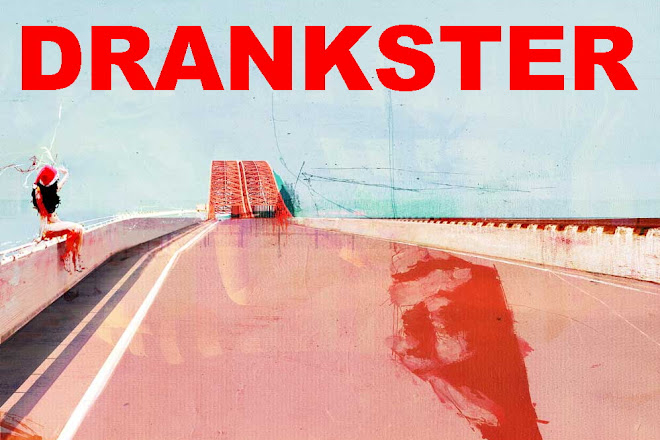
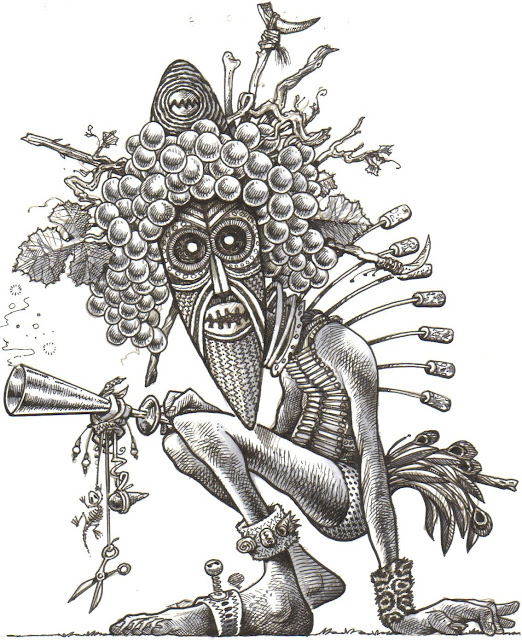




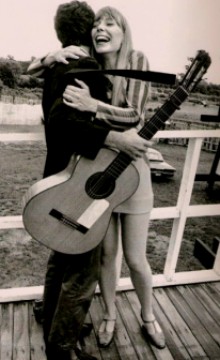
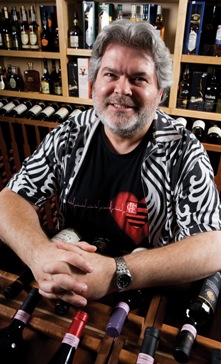
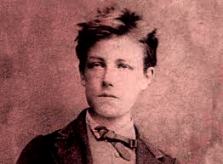
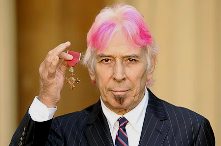
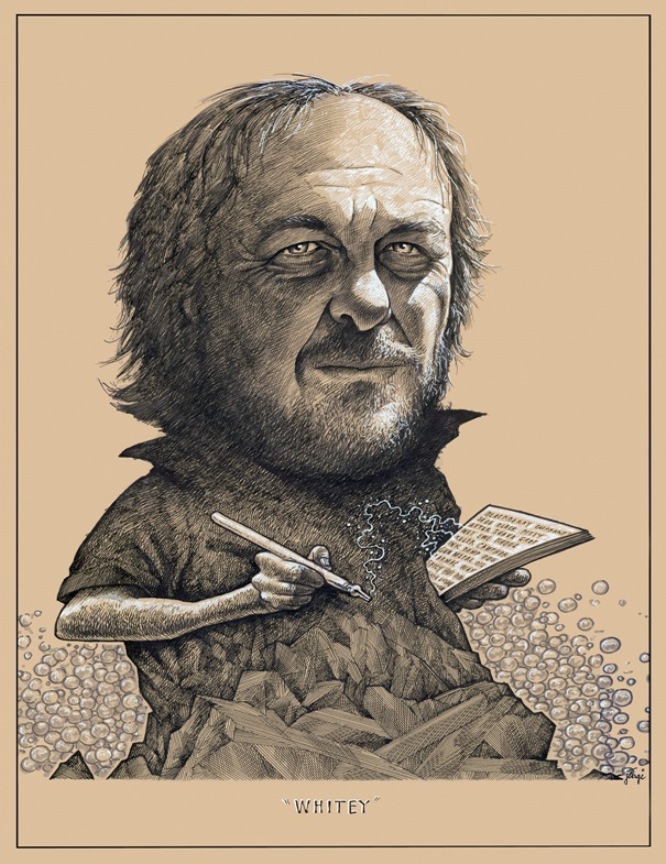
No comments:
Post a Comment